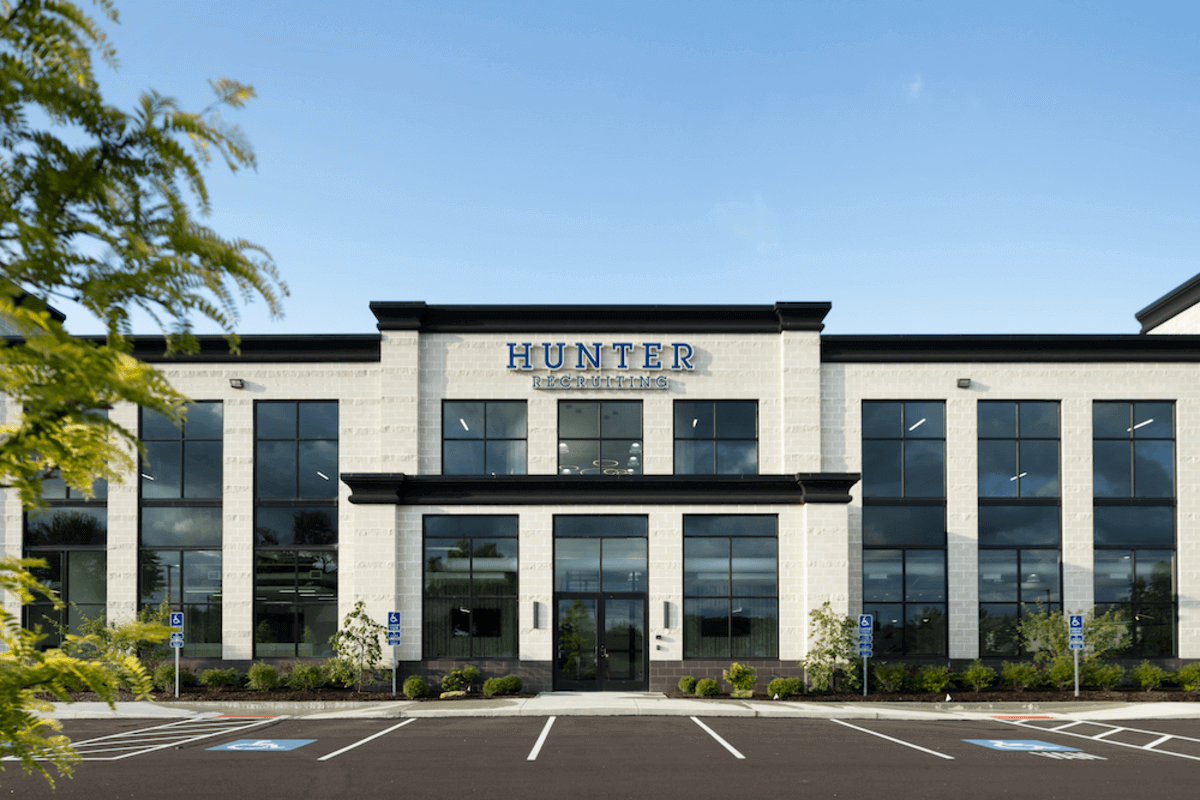How Can Employers Leverage AI in The Hiring Process?
How Can Employers Leverage AI in The Hiring Process?
Artificial intelligence (AI) has been a hot topic, with new technologies such as ChatGPT, CoPilot, Bard and others flooding business conversations, social media feeds and news outlets. Individuals are adopting technologies such as these at alarming rates, with ChatGPT reportedly gaining over 1 million users within the first five days of its release in late 2022. And, it appears that it’s not going anywhere. Grand View Research reported that AI will have a 37.3% annual growth rate between 2023 and 2030.
Yet, AI, still unfamiliar to most, brings up questions and concerns of cybersecurity, technology dependability and job security. However, businesses who begin to leverage AI early may have an advantage when it comes to impacting bottom-line business operations.
One place that organizations can begin to introduce AI is within the recruiting and hiring processes. Gabrielle Christman, President and CEO of Hunter Recruiting, a leading STEM-focused recruitment agency writes, “Our people-first approach to talent allows us to utilize artificial intelligence to develop workflows and pathways that are reshaping hiring as we know it.” She continues, “By hiring the best in our industry and putting them in a position to up-skill and think critically about the capabilities of AI from a structural standpoint, we are then able to craft AI enabled, responsible and effective processes to hiring. With the right people shaping what AI looks like at Hunter, we’ve been able to reduce hiring time, increase candidate engagement and deliver a better product to our customers.”
How can employers leverage AI in the hiring process? Read on for some actionable ways to ingrate AI into the various stages of the recruitment process.
Sourcing
Perhaps the first places organizations can think about implementing AI technologies is within the initial stages of the candidate sourcing process. One of the first thing HR and hiring teams are doing when a new role opens is creating the published job description. Though a simple task, it can take up valuable time. AI can support hiring teams with creating job descriptions that will attract the right talent and perform on various job boards.
Though not always perfect, this is a great way to leverage AI to get the format and basics of a job description that can be further elaborated on as needed. Additionally, AI can help incorporate keywords into job advertisements that are featured on job boards. By utilizing AI as a tool to then build off of, recruiters and hiring teams can create an effective job description quickly. This gets their post out in front of candidates quicker, without wasting time and resources.
Screening
AI has the ability to give hiring teams a big advantage in the screening process. Screening candidates is extremely time consuming for hiring teams and recruiters. Beyond posting the role in several locations, hiring individuals often need to reach out to candidates manually, comb through applicants and identify best-fit contenders. To start, AI can be used to send notifications to AI-identified best-fit candidates that a role has opened matching their background, increasing visibility and applies to the role. After that, Glassdoor reported that the average job posting receives over 250 resumes. It would take an individual a lot of time to comb through that many applicants and identify potential best-fit candidates. Fortunately, AI can be used to analyze resumes against the job description and organize them based on keywords and skills listed. From there, the hiring team can identify a group of candidates to move forward in the hiring process.
After the initial “identifying” step and before the interviewing begins, hiring teams often will screen candidates to ensure they match the basic qualifications. AI chat bots can be leveraged here to generate questions and gather candidate screening responses automatically to be reviewed by the hiring team. By automatically collecting this data, recruiters and HR teams can easily identify who is fit to move on and who might not be a fit for this particular role.
Interviewing
Interviewing is another time-consuming step in the hiring process. Between coordinating schedules, conducting the interviews and meeting to review feedback, this process can last weeks and even months at times. AI can be leveraged to help schedule interviews with times that match up for both the candidate and the hiring team. This can eliminate the back-and-forth that is often experienced when scheduling, streamline the process and ultimately maximize the hiring team’s availability.
AI can also be leveraged beyond scheduling and aid in the actual interviewing process. AI can help identify relevant questions that assess the capabilities of the individuals interviewing. While these may need to be paired with questions related to culture-fit and organizational values, AI can help support a task that is typically very time-consuming. Additionally, AI tools can provide additional details regarding candidate body language including confidence levels and overall honesty. By utilizing these tools, employers may be able to identify best-fit candidate earlier in the interviewing process and streamline some aspects of, what is typically a very time-consuming stage of the hiring process.
Candidate Engagement
Perhaps one of the most highly discussed aspects of the hiring process currently is candidate experience. This is because it is extremely important in keeping candidates engaged throughout the sometimes-timely process of new hire onboarding. A CareerBuilder report found that 78% of candidates say that overall candidate experience they receive is an indicator of how a company values its people. AI can be utilized to support hiring and HR teams by automating candidate experience touchpoints from the first time a candidate is engaging with a company, to their first days in their new role and everything in-between.
One way that AI can be leveraged is with keeping candidates updated on their status for a current opening. For example, if a candidate is moved forward in the hiring process, they can be notified immediately. Or, if a candidate is no longer in consideration, they can receive a note from the hiring team with other roles that they may be qualified for. This is a great way to streamline communication with candidates and prevent any confusion about where they are in the hiring process. Additionally, AI can be used to send the candidate reminders, interview details and check-ins to keep the candidate engaged throughout the process.
—
Overall, a solid hiring strategy requires organization, coordination and communication. AI is a powerful tool, but requires the right people and strategy behind it to make it impactful. By leveraging responsible AI practices in the hiring process, organizations can create an effective recruiting, hiring and onboarding strategy to bring in best-fit candidates onto their teams.
Looking for a hiring partner who utilizes next-generation hiring technologies and innovative sourcing approaches? Learn more about Hunter’s workforce solutions.






